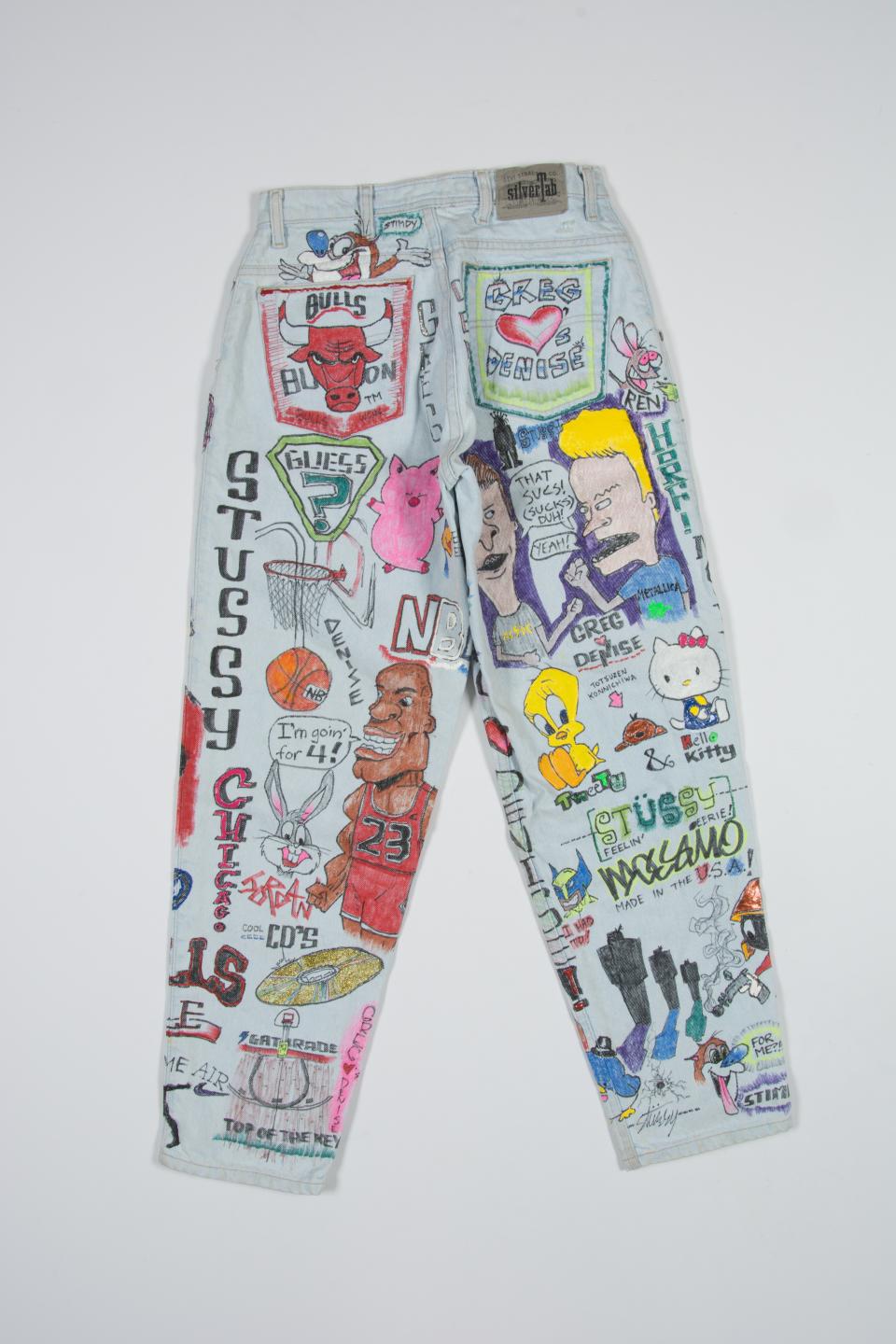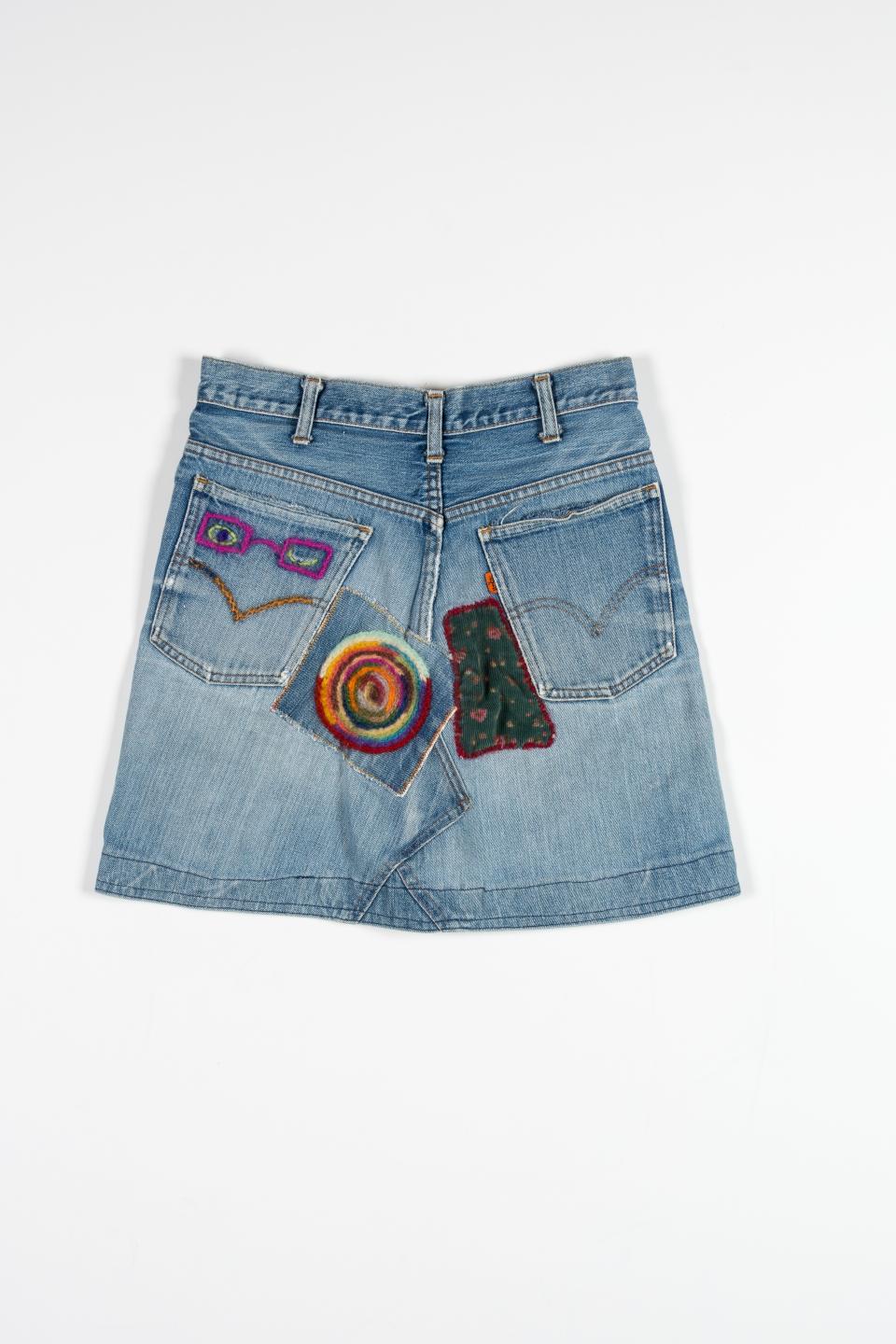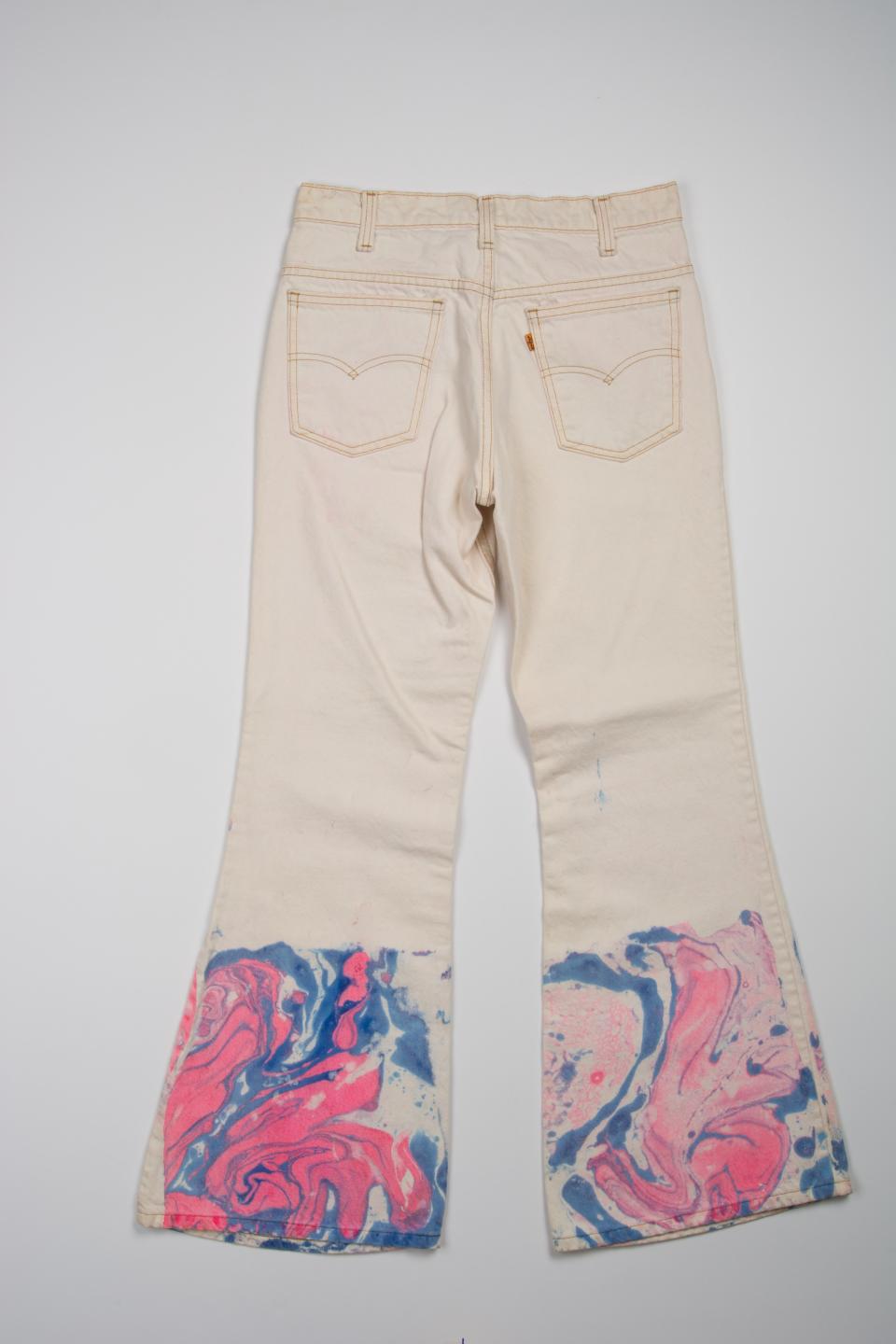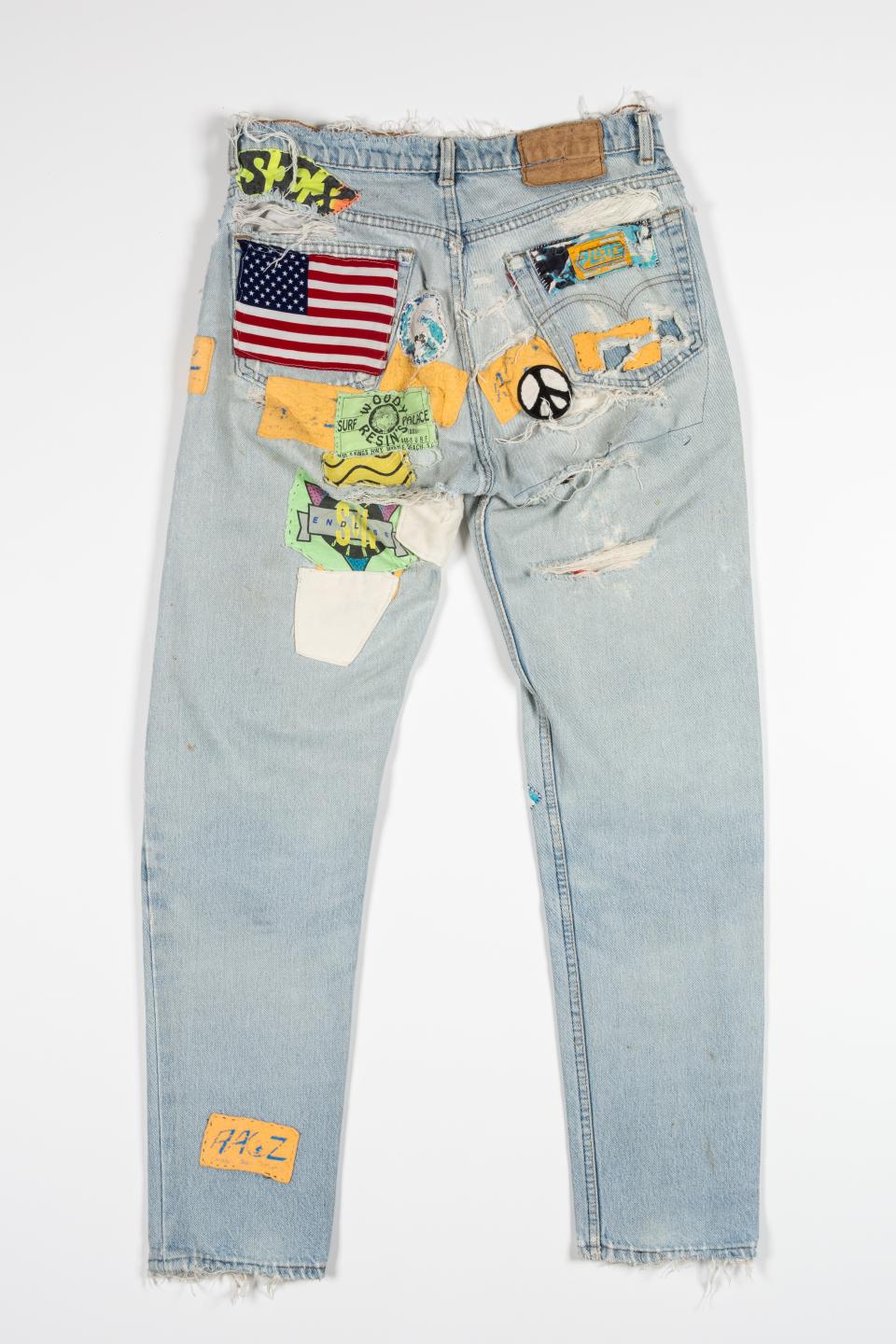Where Did the Idea to Customize Your Jeans Come From?
Though personalized denim is a trend that’s come in and gone out over the years, according to Tracey Panek, Levi Strauss & Co.’s resident historian, “the earliest customization of jeans was really very practical.”
The archivist, who spoke at SCADstyle in Savannah, Georgia, in conversation with GQ’s fashion director, Mobolaji Dawodu, says one of the first examples of the power of customization is a pair of jeans worn by a cowboy, dating back to 1890, in which patching was added on the right front thigh, where the individual would have likely held his reins.
Moreover, there are also patches all over the backside of the pants, likely where the cowboy sat on a saddle. “What you’re seeing with this is a personal look at how one’s wearing it. So it’s not only that he added patches, but it was specific to how that garment was being used,” she tells Teen Vogue prior to her well-attended talk.
In her role at Levi’s, Panek carefully manages the company’s massive archive of denim paraphernalia, including 2,500 photographs and 20,000 clothing items, such asthe oldest pair of 501 jeans in the world, from 1879. She also partners with designers, brand managers, and other employees whose work requires historical materials and insight.
Some objects of note include a leather jacket once owned by Albert Einstein (which was featured on the April 4, 1938, cover of Time), the oldest pair of women’s blue jeans in the world, called the Viola (from the early 1930s), and denim jackets decorated by Elton John, Paloma Picasso, Yves St. Laurent, and Elizabeth Taylor.
In Panek’s work, a major thing she’s observed is that not only does the customization of denim have an established history in which Levi’s jeans have served as a blank canvas for functionality and later, a hotbed of creativity, but that the company has often taken note of the ways the items are being worn by its customers and ultimately adjusted its offerings to better cater to the needs and wants of shoppers. In the late 1960s, for example, young people started cutting up the sides of their denim and adding a triangular patch of fabric. “We have a great pair that has some bandanna added, which added a little extra room so you could wear them with boots,” she says. Panek believes this was the debut of boot-cut denim in a “very organic way.”
Further, she explains, “there was a boutique in the Haight [area of San Francisco], and the owner was styling people like Janis Joplin, and she got in touch with the Levi’s plant manager and said, ‘We’re seeing this silhouette coming out- you ought to introduce a boot-cut jean.’” Noticing a gap in the market, Levi Strauss and Company then went on to introduce its first boot-cut and bell-bottom jeans in 1969 prior to the Woodstock Music Festival that same year, which took place 50 years ago this year. It’s no wonder that Jimi Hendrix appeared at the famed festival wearing a pair of bell-bottoms.
Accordingly, one could argue that the very reason Levi’s has remained relevant all these years is because it has always responded and evolved with its customers. “It’s very reflective of culture,” says Panek. And this was especially true when young people rose to prominence in the late 1960s. “Levi's was like, ‘You know, these are the change makers.’ They made that shift.” Beyond this, the company got lucky with its headquarters’ immediate proximity to San Francisco, a city where youth culture was booming and many psychedelic bands were initially formed.
While the blue jeans silhouette has been moderated slightly over time, they remain timeless and iconic, which Panek says is because they’re so versatile. “They haven’t really changed in terms of the basic things that make them unique. It’s blue; it’s denim. It has rivets. It’s the patch on the back and the general fit.” In this way, the customization of jeans throughout history is telling about the item’s function in different eras and the individuals who wore them.
Panek and Levi's selected five silhouettes that showcase the power and history of personalization.

Decorated Denim
“In the 1970s, New Yorker Annamarie Sandecki converted her orange-tab Levi’s® jeans into a skirt, a popular trend. She also decided on a signature style statement — to demonstrate that girls in glasses can have as much fun as those without, she embroidered a pair of her frames on the back pocket.”

1120_1116
“In the 1970s, one Canadian-born surfer left home in search of warmer climes, converting his sun-bleached Levi's 501s into a scrapbook of his surfing adventures. Patches recount his odyssey from Hawaii and Australia to Myrtle Beach, South Carolina. He sewed on colorful bits of board-cleaning RAGZ next to an American flag and a signature youth symbol — the peace sign.”

1254
“Melody Sabatasso left design school in New York to join the Summer of Love '67 in San Francisco. She exemplified the rising youth culture of the time, using blue jeans as a canvas for personal expression. When invited to a wedding with nothing to wear, Melody created a dress by cutting up pairs of her Levi’s and piecing them back together. A commission by Lauren Bacall, who saw one of her Levi's outfits, launched her career.”

Men's Jeans
“Illustrator Ben Ramirez tagged these SilverTab Levi's jeans in the 1990s with pop culture images from the period — like Michael Jordan, Beavis & Butthead, and even CDs. Loose SilverTab Levi’s jeans were part of Levi’s early streetwear attire.”

1044
“Pull on a pair of bell-bottoms in honor of the of the 50th anniversary of Levi's 517 boot-cut and 646 bell-bottom jeans. These 1980s Lot 684 white orange-tab Levi’s were custom-dyed with colors popular today — and the marbling emphasizes the best feature of these jeans.”
